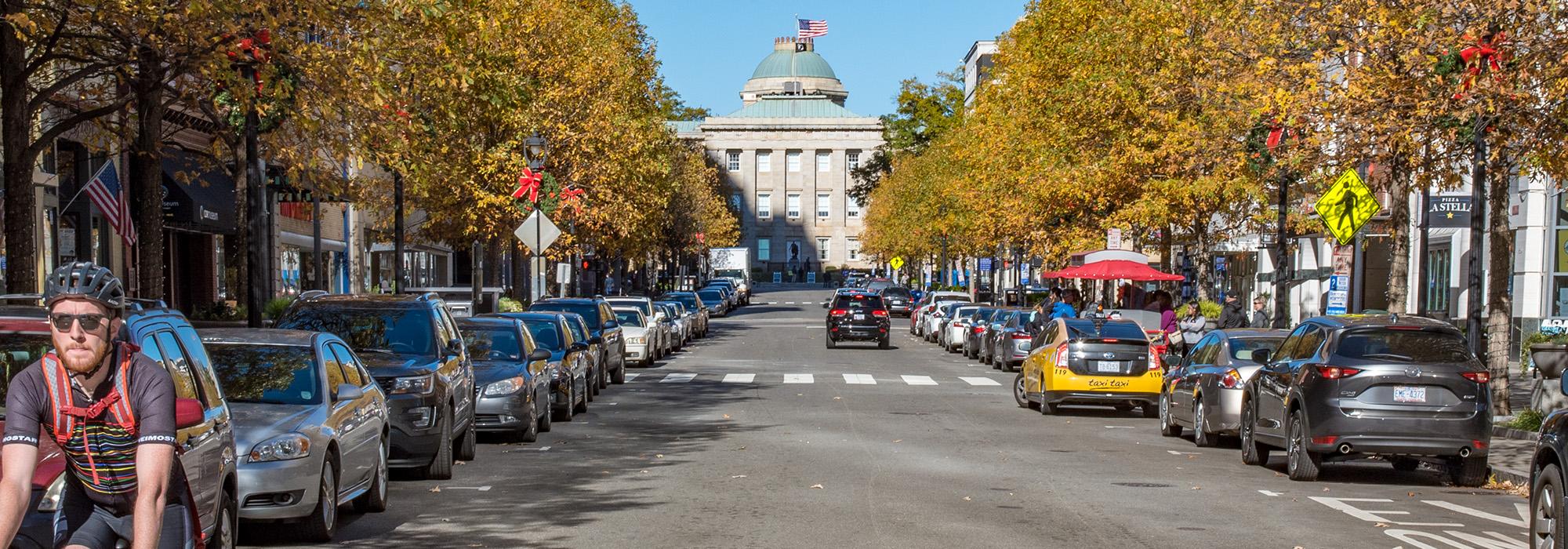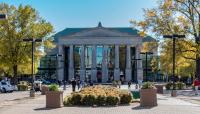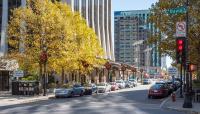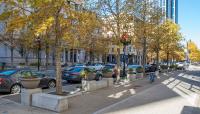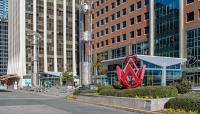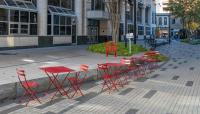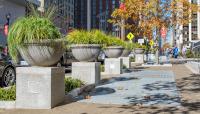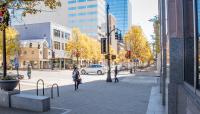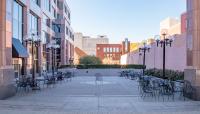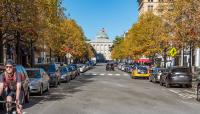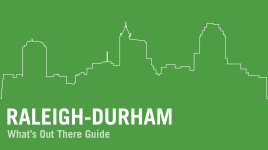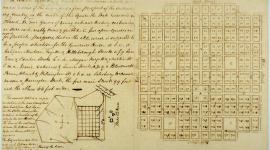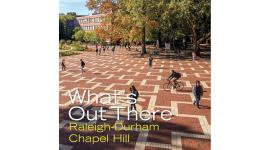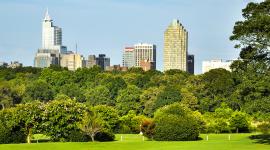Landscape Information
Extending south from Capitol Square, the street central to this two-block-long historic district was one of four main thoroughfares laid out in William Christmas’ 1792 plan for the city. Considered Raleigh’s “Main Street” for much of its history, in the nineteenth century Fayetteville Street often acted as a parade ground, hosting such events as the march of Union troops toward the State Capitol in 1865. The street is fronted by commercial buildings ranging in style from the Neoclassical Raleigh Post Office and Courtroom, built between 1874 and 1879, to the Modernist trio of bank buildings—Wachovia Bank and Trust, North Carolina National Bank, and Branch Banking and Trust—all completed in 1965. Two pedestrian corridors, designed by Richard Bell in 1965 and redeveloped by Surface 678 in 2015, connect Fayetteville and Wilmington Streets.
A streetcar line served the district from 1891 until 1933, when the tracks were paved over for automobile access. In 1977, in an effort to revitalize downtown Raleigh’s central spine, Fayetteville Street was converted to a car-free pedestrian mall, with a master plan by landscape architect Lewis Clarke. The road closure had the opposite effect, however, and many businesses were shuttered in the years that followed. In 2006 the City reopened the street to traffic. Sidewalks were broadened with brick and modular concrete pavers, street trees were planted, and curbside benches, lighting, and large concrete planters were installed. Although sight lines shifted as the city grew, the relocation of the Raleigh Convention Center from Fayetteville Street to a neighboring street in 2005 restored the intended vista toward the Capitol. The Fayetteville Street Historic District was listed in the National Register of Historic Places in 2008.



